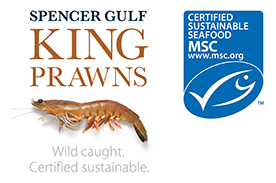The Fishery
Wild Caught, Certified Sustainable (MSC)
For superior quality and full taste, Spencer Gulf King Prawns (Melicertus latisulcatus) are renowned throughout the world as the premium species of prawn. Spencer Gulf King Prawns are wild caught straight from the cold clean waters of the Spencer Gulf, full of natural flavour.
The uniquely deep, complex flavours of Spencer Gulf King Prawns are derived from their time spent in the cold, clear waters of the Southern Ocean.
The Spencer Gulf King Prawn fishery has long recognised the importance of fishing to the highest sustainable standards and has become the first prawn fishery in the Asia Pacific region to be certified sustainable by the internationally recognised Marine Stewardship Council. The fishery is mandated to maintain ecological sustainable stock levels and minimise impacts on the ecosystem.
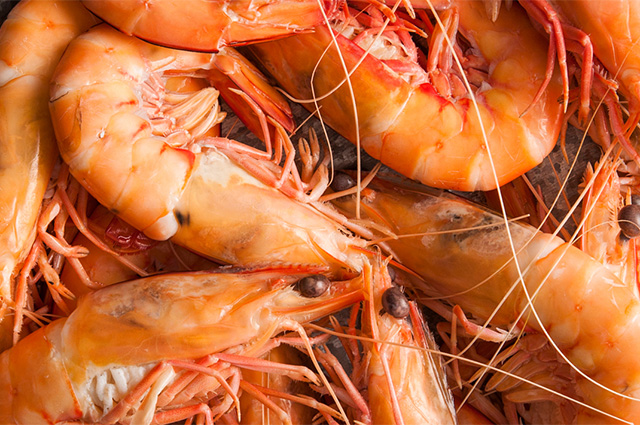
Protecting the Biodiversity of our Oceans
The Spencer Gulf King Prawn fishery has 39 licensed prawn fishers, who fish on average 55 nights per annum. The fishery only operates in approximately 15% of the Spencer Gulf, only fishing in waters deeper than 10m. The fishery has introduced self-imposed permanent closures to protect sensitive sea floors, biodiversity and juvenile prawns, leaving much of the Gulf untouched. This ensures a healthy ecosystem and natural regeneration of the prawns.
Harvesting Method
Commercial fishing is undertaken using the demersal otter trawl technique; consisting of towing a funnel shaped net leading into a bag (referred to as a cod-end).
A separate large meshed bag (referred to as a crab bag) within the cod end acts to retain blue crabs and other animals caught while the prawns flow to the cod end.
A separate large meshed bag (referred to as a crab bag) within the cod end acts to retain blue crabs and other animals caught while the prawns flow to the cod end. The crab bag reduces crab mortality, incidental damage to prawns and allows animals to be promptly discarded alive to the sea. Otter boards (also described as; bison trawl boards or bison boards) are used to keep the nets open horizontally while it is being towed.
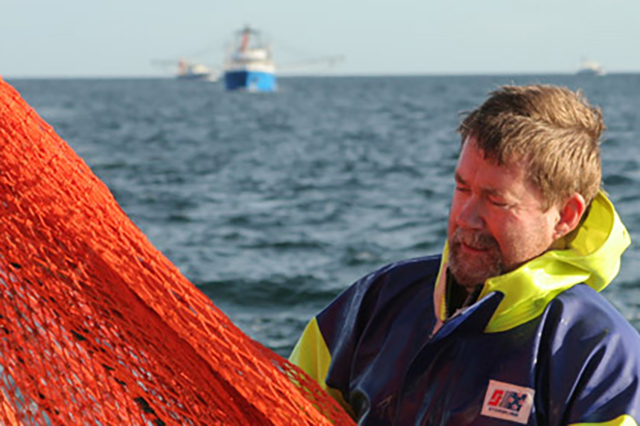
Short Trawl Shots
The duration of trawl shots are generally around 30 – 50 minutes, after which the catch is emptied into a hopper-conveyor system for sorting, grading and packing. Trawl shots are of short duration in comparison to many other fisheries (other prawn fisheries can trawl for several hours). The short shots increase the chance of survival for all by-catch (non-target species) that is subsequently discarded.
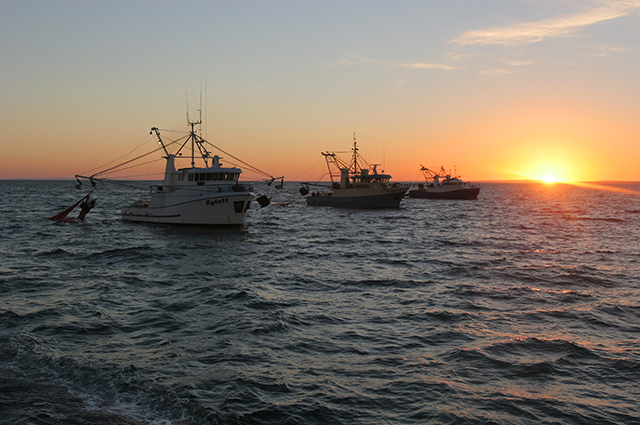
Minimising the Impact on Other Species
The vessels also use hoppers to quickly separate mega fauna, such as sharks and rays. The hoppers allow these species to be safely returned immediately to the sea once emptied from the net. These mega fauna species exhibit high survivability due to the short period of time out of the water and minimal handling.
The Fishing Season
The fishing season for the Spencer Gulf Prawn Fishery lasts from November through to and including June of the following year. The fishery does not fish in January or February to ensure that spawning can occur with limited interference. Fishing occurs in November and December to meet Christmas demands for stock. However, these fishing periods are limited to minimise the impact on spawning and recruitment.
Oceanic Variances
The West Coast Prawn fishery is highly variable due to oceanic influences. It appears that it thrives when the Leeuwin current is strong keeping the eastern bight supplied with warmer waters. It tends to be impacted by periods of cold water upwelling, which will generally reduce prawn activity. The three boat fishery has been producing healthy catches in recent times.
Regulated Strategies
The fishing strategies determine the areas to be fished according to the size of the prawns and fishing effort is controlled by the average nightly catch in addition to the regulated gear restrictions. The Associations Management Committee develop fishing strategies in line with the Management Plan, fishing criteria and survey information. The fisheries are then managed at sea by a Committee at Sea to ensure that the fishery strategy is being met.
World Class Handling
The Spencer Gulf Prawn fishery is a world leader in the way the catch is handled, including short trawl shots to reduce damage to prawns, the use of ‘hoppers’ for efficient sorting of the catch and rapid return of by-catch to improve survivability and sustainability, ‘graders’ to sort the prawns into marketable size categories and snap freezing facilities that enable full processing on-board.
After each trawl the catch is emptied onto a sorting table where the prawns are graded and either cooked or packed raw (green). Spencer Gulf King Prawns are snap frozen within hours of being caught, sealing in the flavours.
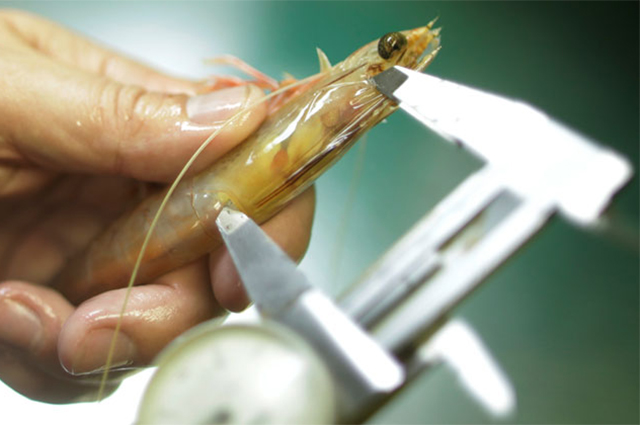
Contribution to the Economy
Spencer Gulf and West Coast Prawn Fisheries licence holders contribute to the cost (through PIRSA licence fees) of conducting economic research each year. The economic research provides an economic assessment of the Spencer Gulf and West Coast Prawn Fisheries.
This includes information on the factors affecting costs in the fisheries, regional and state economic impact, prawn exports and factors influencing the economic condition of the fisheries. The most recent report prepared by EconSearch’Economic Indicators for the Spencer Gulf and West Coast Prawn Fisheries 2006/07’’can be found on the PIRSA Fisheries website.
The economic report details that in 2006/07 the Spencer Gulf and West Coast Prawn Fisheries directly contributed $56.9M to the State’s economy and $42.1M to the Eyre region’s economy. In addition, the Spencer Gulf and West Coast Prawn Fisheries directly employed people in 217 Full Time Equivalent (FTE) jobs.
168 FTE jobs were provided through other direct positions (ie processing, transport etc) in South Australia. A further 289 FTE positions were provided in South Australia through flow-on effects. In total, the Spencer Gulf and West Coast Prawn Fisheries contributed to over 670 FTE jobs in South Australia.
The Prawn Association recommends reading the ‘Economic Indicators for the Spencer Gulf and West Coast Prawn Fisheries 2006/07’ report for these details, or for further information.
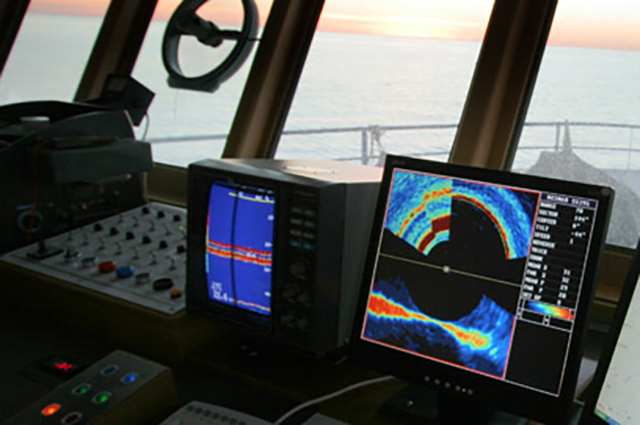
Real Time Management
Real Time Management gives the fleet the ability to change fishing strategies very quickly whilst at sea, based on the movement of prawns. The movement of prawns is very dynamic, particularly during periods when the tide is strong. This can cause either the average size of prawns to change in an area or the volume of prawns to change, for example small prawns may flood into grounds with the tide.
Through the Committee At Sea, the Spencer Gulf Prawn Fishery is monitored and areas are changed due to stock levels or prawn sizes that do not meet the catch criteria or because of high levels of by-catch (non-target species). For example if small prawns moving into fishing grounds, those grounds will be immediately closed to protect the smaller prawn.
